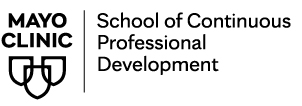Dr. Meyer - Does the use of thromboelastographic decrease unnecessary blood product transfusions in cirrhotic patients undergoing invasive procedures compared to conventional coagulation tests without resulting in increased bleeding complications?
Learning objectives
Upon completion of this activity, participants should be able to:
- Recognize how liver disease (i.e. cirrhosis) results in complex changes in hemostasis that leads to a rebalance between the natural procoagulant, anticoagulant, and fibrinolytic systems.
- Recognize the limitations of conventional coagulation tests (CCT) and their inability accurately predict bleeding risk in patients with cirrhosis.
- Review what thromboelastography measures and certain instances when it may be useful.
- Demonstrate the potential harm/complications of unnecessary blood product transfusions.
ATTENDANCE / CREDIT
Text the session code (provided only at the session) to 507-200-3010 within 48 hours of the live presentation to record attendance. All learners are encouraged to text attendance regardless of credit needs. This number is only used for receiving text messages related to tracking attendance. Additional tasks to obtain credit may be required based on the specific activity requirements and will be announced accordingly. Swiping your badge will not provide credit; that process is only applicable to meet GME requirements for Residents & Fellows.

 Facebook
Facebook X
X LinkedIn
LinkedIn Forward
Forward